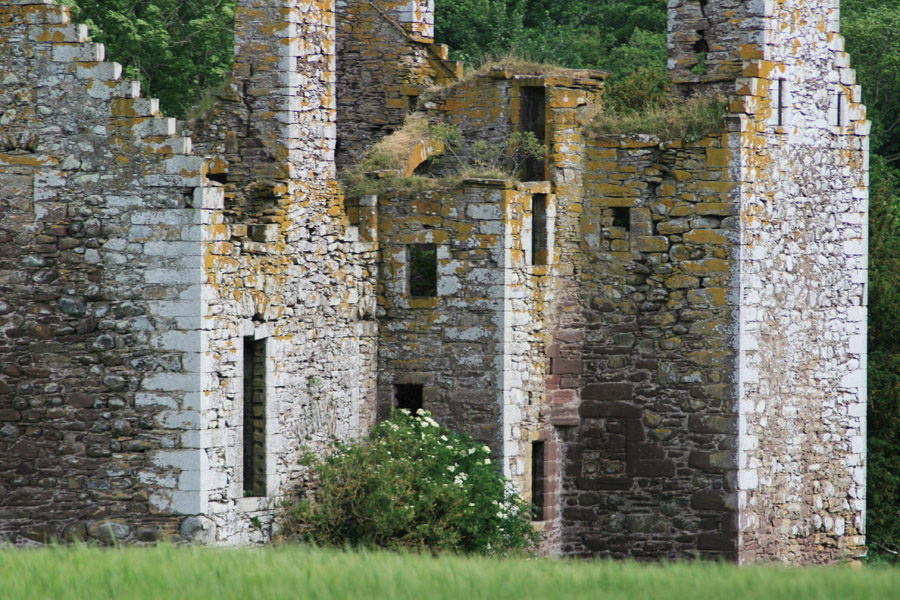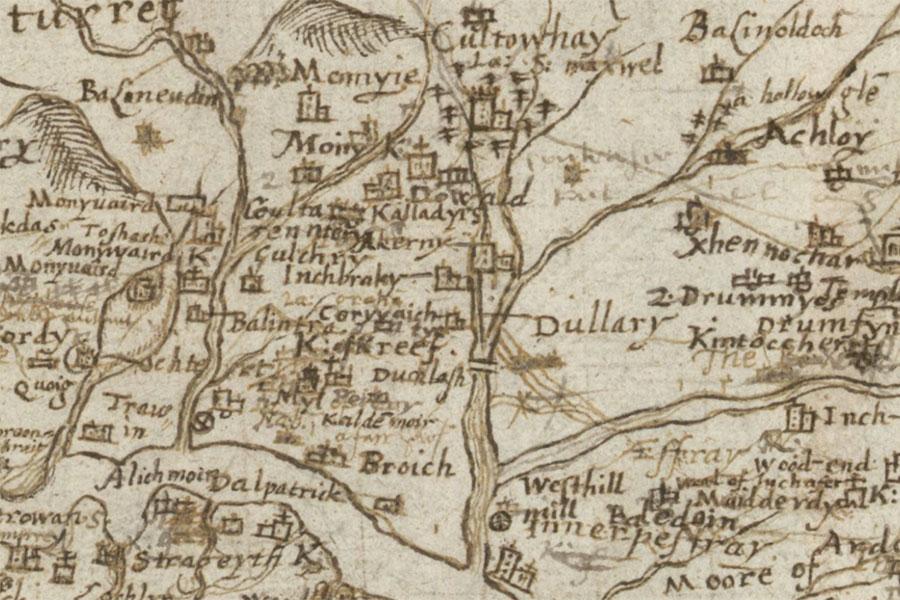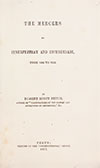

Innerpeffray Castle is an early 17th century tower house which probably incorporates earlier work.
The earliest reference to a castle on the lands of Innerpeffray is from the late 13th century, when the estate was owned by the Earls of Strathearn. Malcolm de Innerpeffray received a charter from Robert Bruce at Rosneath in 1318 or 1319 confirming a donation to him from Malise III, Earl of Strathearn, of the lands of Dollerie and Meikleour.
The lands of Innerpeffray seem to have passed to the Mercer family through marriage. It has been suggested that the marriage was between a Robert Mercer and the daughter of a Patrick or Peter de Innerpeffray and his wife Margaret de Fassington in the second half of the 14th century.
Robert’s eldest son, also Robert, inherited his father’s estates, while his second son, Andrew, married Margaret Murray of Tullibardine around 1438.
The second Robert’s son, another Robert, seems to have got into financial difficulties and in 1465 sold his lands to Thomas Oliphant of Dron, the Lundie family, the Colquhouns of Luss and the Murrays of Tullibardine. Some of the original lands of Innerpeffray seem to have been split off at this time.
Around 1503 John Drummond, 1st Lord Drummond, had a charter for the lands of Innerpeffray. Drummond was the son of Sir Malcolm Drummond of Cargill and Stobhall, and Mariota, eldest daughter of Sir David Murray of Tullibardine.
Drummond may have been responsible for remodelling an old castle at Innerpeffray, or perhaps building a new one. Standing on the banks of the River Earn, the castle currently takes the form of an L-plan tower house with a square staircase in the re-entrant angle.

The ground floor level consists of four barrel-vaulted chambers – three in the main block, and a fourth in the wing which housed the kitchen. Several inverted keyhole-type loopholes can be seen.
Occupying most of the first floor in the main block is the great hall, with two smaller chambers to the south (one in the main block and one in the wing). Above this was a further storey, with yet another level on the top of the wing.

Originally there was a barmkin wall to the west of the castle, enclosing a small courtyard, with the gateway being attached to the north-west corner of the castle. A small part of the barmkin still survives in the form of a jamb and arch springing. Further courtyards and gardens are thought to have extended beyond this inner courtyard.
The “late Robert Leslie of Innerpeffray” is mentioned in the Parliamentary Register of 1543, however Innerpeffray was back with the Drummonds later that century.
In 1565 Alexander Drummond of Midhope was accused of adultery with Margaret Drummond, daughter of Sir John Drummond of Innerpeffray and wife of Robert Elphinstone, 3rd Lord Elphinstone, and of “the theftuous destruction, stealing, intromitting, wasting, disponing and concealing from Lord Elphinstone” of goods and money to the value £20,000 over the previous three years.

Around 1610 the castle underwent extensive renovations in the hands of James Drummond, the 1st Lord Madderty. The main change was the introduction of five large rectangular windows in the east wall of the great hall, which gave the castle a grander, less-defensive outlook. He presumably also added the crow-stepped gables.

An ornately-carved 17th century obelisk type sundial from Innerpeffray Castle can now be found on the lawn of Cromlix House.

Innerpeffray is marked on John Adair’s 1720 map (based on his 1683 manuscript) as “Inverpeffry”.

John Adair, 1720
Today the castle is a substantial ruin, standing to its full height but with some localised collapses and no roof.
Alternative names for Innerpeffray Castle
Inerpafray; Inner Peffray; Innerpeffer; Innerpeffry; Inverpeffry











